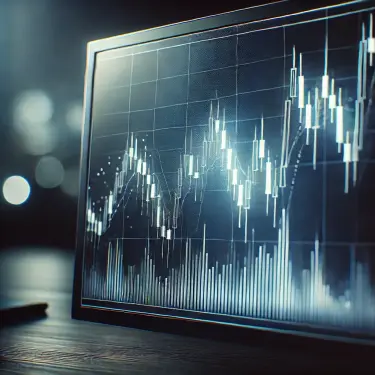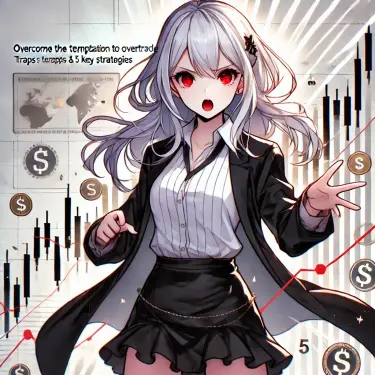1. What is Market Psychology?
What is Market Psychology in FX?
Market psychology refers to the collective emotions and judgments that arise when traders act in a similar way. In the FX market, this collective behavior often reinforces market trends, strengthening the direction of price movements. Understanding this market psychology is crucial for traders to predict market trends effectively.
2. The Impact of Market Psychology on the FX Market
Anchoring Effect
The anchoring effect is a psychological phenomenon where individuals rely too heavily on the first piece of information they receive. For instance, if a trader becomes overconfident in the current market based on a specific price or a past high, they may lose their ability to make flexible judgments, increasing their risk of losses. When the USD/JPY pair approaches a past high, for example, many traders tend to sell, influenced by this anchor.
Sunk Cost Fallacy
The sunk cost fallacy is the tendency to persist in an endeavor due to previously invested time or money, which often leads to delayed loss cutting. Trapped by the desire to recover their losses, traders may miss opportunities to take on new positions. This effect is particularly prominent when a trader is on a losing streak.
Bandwagon Effect
The bandwagon effect is the psychological need to feel a sense of security by following the majority. In the FX market, when many traders buy or sell at the same time, it can cause sharp price movements. While this effect can be used to ride the momentum of the market, excessively following the crowd can also lead to significant risks.

3. Reading Market Psychology from Charts
Chart Patterns and Psychology
Chart patterns are a visual representation of market psychology. For example, the double top and double bottom are well-known signs of a trend reversal, and their success rate is relatively high at 75-79%. Traders can use these patterns to time their trades.
The head and shoulders pattern is also considered one of the most reliable patterns, with a claimed success rate of 83%. This pattern signals the end of an uptrend and the start of a downtrend, and is widely used by many traders.
Resistance and Support Levels
Resistance and support levels are price zones that traders pay close attention to, and where market psychology is most evident. Round numbers and past highs or lows are often psychological milestones. A bounce or a breakout at these points can be a key factor in making trading decisions.
4. Utilizing Market Psychology in Trading Strategies
Trend Following vs. Counter-Trend Trading
The choice between trend following and counter-trend trading is based on an understanding of market psychology. When a strong trend is in place, you can profit by following the trend (trend following) with the crowd. However, when a trend is about to reverse, you can aim for a large return with a counter-trend trade. But be aware that counter-trend trading is riskier and requires careful judgment.
Loss Cutting and Market Psychology
The timing of loss cutting is one of the most difficult decisions for a trader. Decisions influenced by market psychology can often hinder proper loss cutting. For example, the sunk cost fallacy may lead to a desire to recover losses, ultimately resulting in even greater losses. It is crucial to set loss-cut points in advance and execute your plan without being swayed by emotions.

5. Important Considerations When Using Market Psychology
Risk Management and Flexible Thinking
Even with an understanding of market psychology, it doesn’t guarantee success. The market can make unexpected moves, so it is essential to have thorough risk management. You should always consider alternative scenarios when trading.
The Importance of Emotion-Free Trading
Making logical judgments without being influenced by emotions is extremely important in trading. Especially when a trend is strengthening, it is crucial to conduct a calm analysis and not rely excessively on the herd mentality. Trading strategically with a long-term perspective is the key to success.
6. Summary
The Trading Advantage Gained by Understanding Market Psychology
Understanding market psychology in the FX market is a powerful tool for strengthening your trading strategy. However, the market is constantly changing, so it is essential to not be too bound by crowd psychology and to remain flexible.
Reference Sites
為替をはじめとする相場の世界は、大衆心理によって動きやすい傾向にあります。為替市場に大きな影響力を持つプレーヤーをよく知…
ファンダメンタルズ、政治、市場心理、地政学など、為替相場を動かす要因は様々です。 ここでは、為替相場が変動する主な要因に…
OANDAの東京サーバで使えるインジケーター「Chart-in-Chart」を使うと通貨ペアを反転させて表示することがで…














